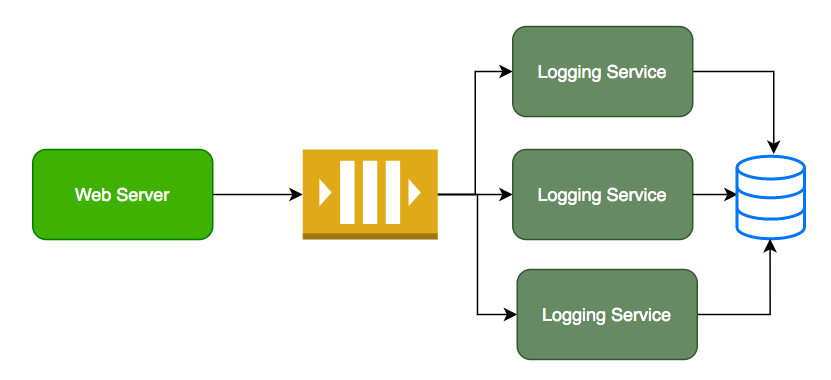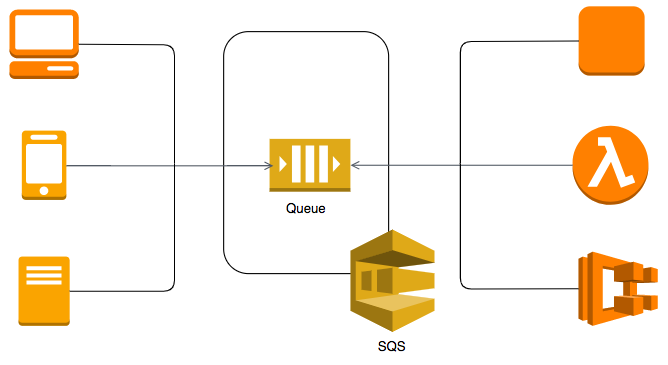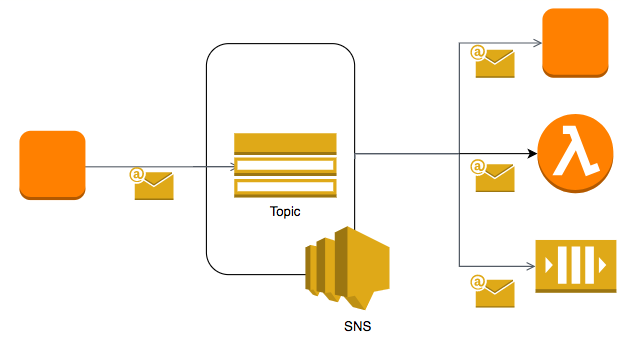Let’s get a quick overview of comparison between SQS vs SNS vs Amazon MQ.
You will learn
- Why do we need asynchronous communication?
- What are the different asynchronous communication options provided by AWS?
- What is SQS ?
- What is SNS?
- What is Amazon MQ?
- When do you use SQS vs SNS vs Amazon MQ?
Synchronous Communication
Lets take an example of synchronous communication and the challenges with synchronous communication:
Applications on your web server make synchronous calls to the logging service.

Consider these situations:
- What if your logging service goes down?
- Will you applications go down too?
- What if all of sudden, there is high load and there are lot of logs coming in?
- Log Service is not able to handle the load and goes down very often
Two major concerns with the synchronous communications are:
- Tight Coupling
- Performance bottleneck & Inability to scale
Asynchronous Communication - Decoupled
What is the best approach to solve these coupling and scaling issues? How about going asynchronous?
- Create a queue or a topic
- Your applications put the logs on the queue
- They would be picked up when the logging service is ready
- Good example of decoupling!

Asynchronous Communication - Scale up
Amazing thing about the asynchronous communication is that it enables you scale up very easily.
You can have multiple logging service instances reading from the queue!

Asynchronous Communication - Models
In asynchronous communication there are two possible models
- Pull Model - Consumers have to pull messages from the queue/topic
- Push Model - Messages are pushed to the various interested consumers
Asynchronous Communication - Pull Model
Quick overview of the pull model:
- Producers put messages on the queue
- Consumers poll on the queue
- Only one of the consumers will successfully process a given message
Here are the advantages of using SQS:
- Scalability
- Scale consumer instances under high load
- Availability
- Producer up even if a consumer is down
- Reliability
- Work is not lost due to insufficient resources
- Decoupling
- Make changes to consumers without effect on producers worrying about them

Simple Queuing Service
SQS is based on pull model. Here are some of the important features:
- Reliable, scalable, fully-managed message queuing service
- High availability
- Unlimited scaling
- Auto scale to process billions of messages per day
- Low cost (Pay for use)
Asynchronous Communication - Push Model - SNS
Here’s a quick overview of the SNS approach:
- Subscribers subscribe to a topic
- Producers send notifications to a topic
- Notification sent out to all subscribers
Here are the advantages of using SNS:
- Decoupling
- Producers don’t care about who is listening
- Availability
- Producer up even if a subscriber is down

Amazon Simple Notification Service(SNS)
SNS is based on push model. Here are some of the important features:
- Publish-Subscribe (pub-sub) paradigm
- Broadcast asynchronous event notifications
- Simple process
- Create an SNS Topic
- Subscribers can register for a Topic
- When an SNS Topic receives an event notification (from publisher), it is broadcast to all Subscribers
- Use Cases : Monitoring Apps, workflow systems, mobile apps
- Provides mobile and enterprise messaging web services
- Push notifications to Apple, Android, FireOS, Windows devices
- Send SMS to mobile users
- Send Emails
- REMEMBER : SNS does not need SQS or a Queue
- You can allow access to other AWS accounts using AWS SNS generated policy
Amazon MQ
Amazon MQ is a managed message broker service for Apache ActiveMQ.
Here are some of the important features:
- (Functionally) Amazon MQ = Amazon SQS (Queues) + Amazon SNS (Topics)
- BUT with restricted scalability
- Supports traditional APIs (JMS) and protocols (AMQP, MQTT, OpenWire, and STOMP)
- Easy to migrate on-premise applications using traditional message brokers
- Start with Amazon MQ as first step and slowly re-design apps to use Amazon SQS and/or SNS
- Scenario: An enterprise uses AMQP (standard message broker protocol). They want to migrate to AWS without making code changes
- Recommend Amazon MQ